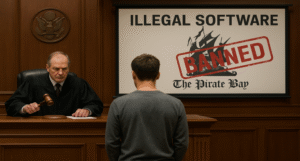Members of the European Parliament have adopted a reform of the EU’s greenhouse gas emission system, primarily in the aviation and maritime sectors, a mechanism for carbon border adjustment, and a new social climate fund. This is the EU’s plan to reduce greenhouse gas emissions by at least 55% by 2030 compared to 1990 levels, in line with the European Climate Law.
What is the “Fit for 55” Package?
The Fit for 55 Package is a set of proposals to revise and update EU legislation, as well as to launch new initiatives, with the aim of ensuring that EU policies are in line with the climate goals agreed upon by the European Council and the European Parliament.
Contents of the “Fit for 55” Package:
Changes to the Emissions Trading System (EU ETS)
The European Union Emissions Trading System (EU ETS) sets the price of carbon dioxide emissions and annually reduces the emission cap for certain economic sectors. The European Commission proposes further lowering the overall emission cap and increasing the annual rate of emission reduction. Additionally, it includes the gradual phasing out of free allowances for aviation emissions and carbon reduction for international aviation, including emissions from shipping.
Regulation on Effort Sharing
The regulation sets stricter emission reduction targets for each member state, specifically for buildings, road and maritime transport, agriculture, waste, as well as small industrial sectors. The criteria for allocation are GDP per capita and other macroeconomic criteria of individual countries.
Amendment to the Renewable Energy Directive for implementing the new 2030 climate target (RED II Recast)
Energy production and consumption account for 75% of emissions in the EU, making an accelerated transition to an environmentally friendly energy system crucial. RED II will set an increased binding target for 2030, with 40% of energy expected to come from renewable sources. All member states will contribute to this target, and specific renewable energy use targets will be proposed for transport, heating and cooling, buildings, and industry.
Directive on Energy Efficiency
This directive encompasses member states’ commitment to reducing total energy consumption, which has nearly doubled. Additionally, the public sector will be required to renovate 3% of its buildings annually to stimulate a so-called renovation wave, create jobs, and reduce energy consumption and costs for taxpayers.
Regulation setting new CO2 emission standards for cars and vans
Stricter CO2 emission standards for passenger cars and vans will require a 55% reduction in average emissions from new cars by 2030 and a 100% reduction by 2035, compared to the 2021 levels. As a result, all new cars registered from 2035 onward will be emission-free.
Regulation on inclusion of greenhouse gas emissions and removals from land use, land use change, and forestry
The regulation sets an overall EU target for removing carbon dioxide, equivalent to 310 million tons of CO2 emissions by 2030. By 2035, the EU aims to achieve climate neutrality in the land use, forestry, and agriculture sectors. The EU Forest Strategy involves planting three billion trees across Europe by 2030.
Revision of the Energy Tax Directive
The revision of the Energy Tax Directive proposes aligning the taxation of energy products with EU energy and climate policies, promoting clean technologies, and phasing out obsolete products. The objective of the Energy Tax Directive is to maintain green tax revenues for member states.
Key changes include the following components:
- Fuels will be taxed based on their energy content and environmental impact rather than volume, helping businesses and consumers make cleaner, climate-friendly choices. Under this ranking, conventional fossil fuels such as gas oil and gasoline will be taxed at the highest rate, while electricity will be taxed at the lowest rate.
- Products will be categorized for taxation purposes in a simplified manner to ensure that the most environmentally harmful fuels are taxed the most.
- Exemptions for certain products and home heating will be phased out gradually. Therefore, fossil fuels can no longer be taxed below minimum rates.
- Fossil fuels used as aviation fuel within the EU, maritime transport, and fishing should no longer be completely exempt from energy taxation in the EU.
Carbon Border Adjustment Mechanism (CBAM)
The Carbon Border Adjustment Mechanism (CBAM) is a tool to set a price on carbon emissions associated with the production of high-carbon-intensity goods entering the EU and to incentivize cleaner industrial production in non-EU countries. The CBAM aims to ensure that the carbon import price is equivalent to the domestic carbon price and to ensure the sustainability of EU objectives.






